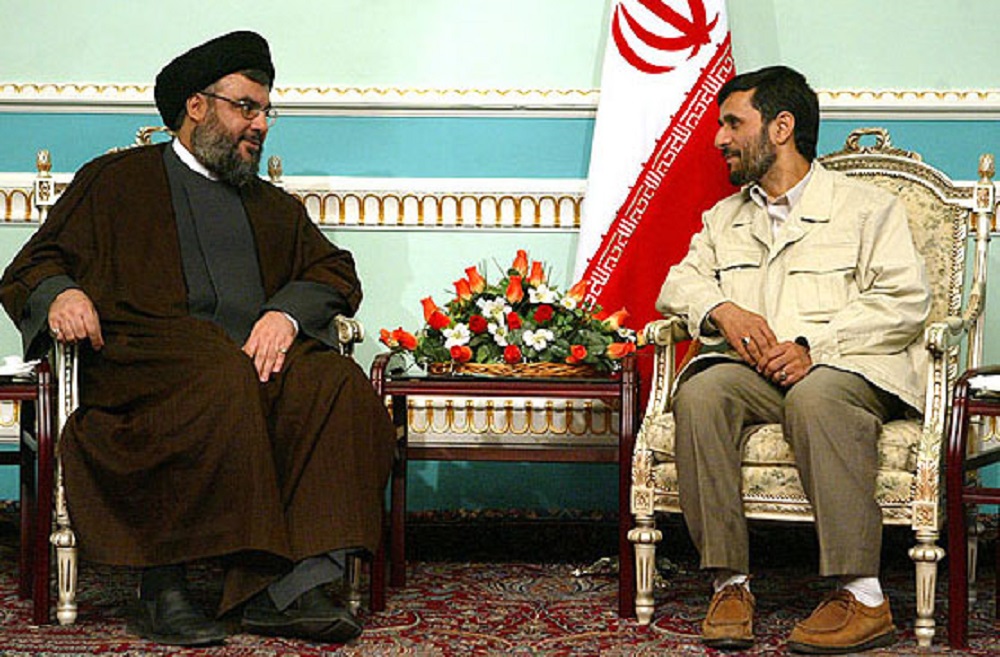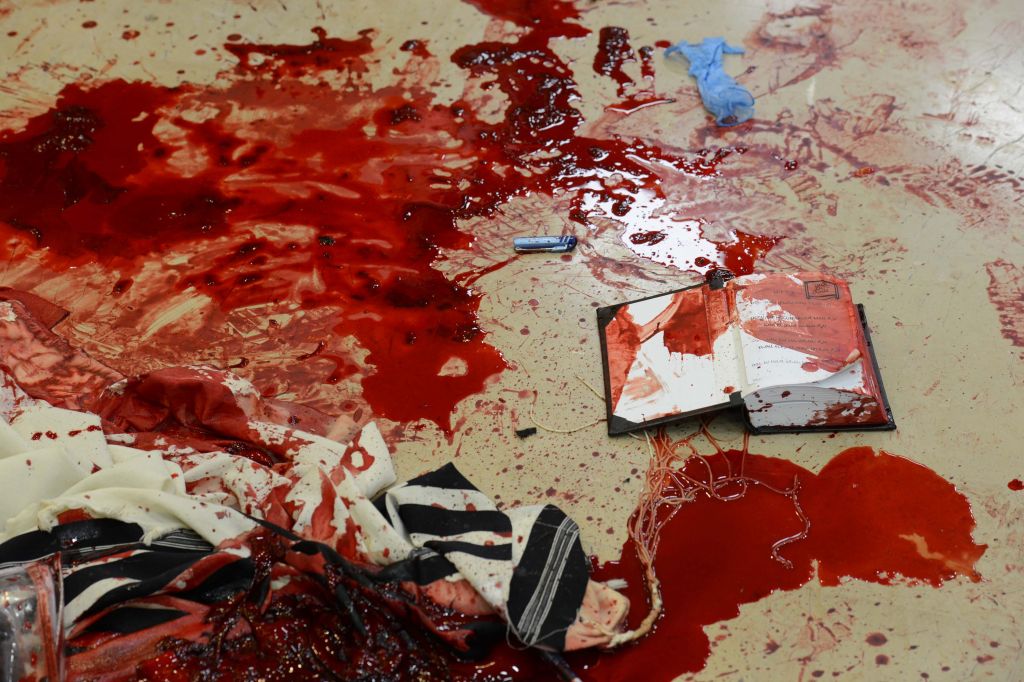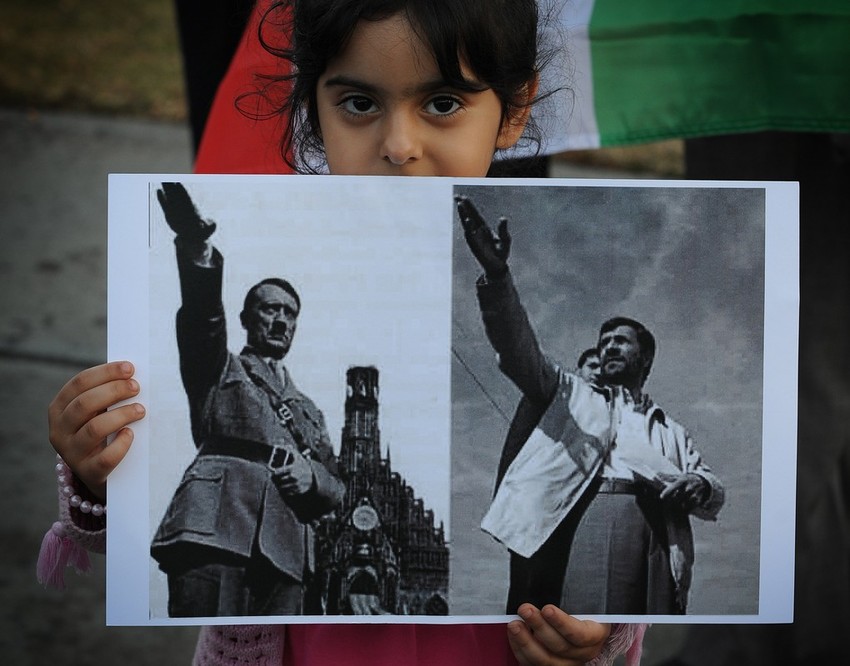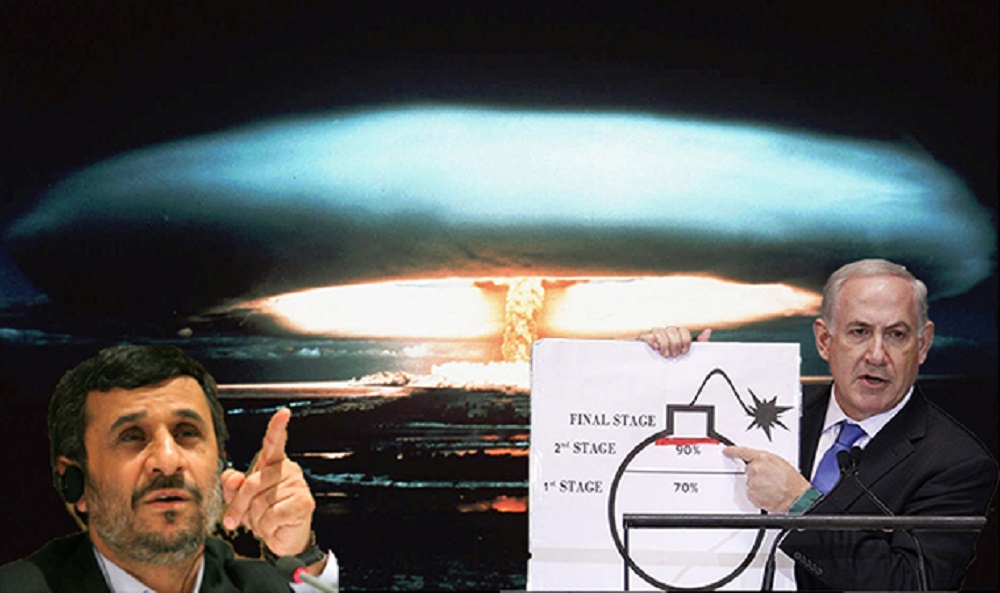Lebanon’s Hezbollah Dilemma
With each passing day, it is becoming increasing difficult to determine where Hezbollah control of Lebanon ends and where Lebanese government control begins. The terrorist organization now dictates Iranian decrees to Lebanese officials and institutions, manipulates their activities, and greatly influences the country’s decision-making processes through infiltration, intimidation, and terrorism. No decision can be made by the Lebanese government or any of its institutions including the Lebanese Armed Forces without Hezbollah’s approval.
The deadly clash in early August along the Lebanon-Israel border that left a senior IDF officer dead and another seriously wounded highlighted the problem, and has raised questions about future U.S. government funding of advanced weaponry and equipment for the Lebanese Armed Forces (LAF) – a policy which, until now, has represented the cornerstone of U.S. efforts to stabilize that country. Evidence indicates that the LAF sniper (a Shiite) was closely associated with Hezbollah (a Shiite terrorist organization), and many in Congress fear that such associations between the LAF and Hezbollah go far deeper than meets the eye.
Hezbollah’s influence has gradually seeped into state institutions especially the Lebanese army. The LAF’s profound weaknesses and the level of penetration by Hezbollah is one of the main reasons why the LAF seeks to avoid a confrontation. There is a very real danger that, in such an eventuality, the LAF’s Shiite contingent (estimated at approximately a third of LAF army officers and sixty percent of its rank and file soldiers) would desert and join the terrorist group leading to another Lebanese civil war.
During the 2006 war, LAF elements colluded with Hezbollah, allowing the group to use Lebanese navy radar to track and nearly sink the Israeli warship Hanit, and the last time Hezbollah openly challenged the authority of the government in May 2008, the LAF stood aside while Hezbollah took over Beirut in 24 hours after the Lebanese government moved to shut down the organization’s telecommunications network.
The LAF also performed poorly in its battles with Fatah al-Islam in the Nahr el Bared Palestinian refugee camp. According to David Schenker writing for the Washington Institute for Near East Policy, in 2007, when the (LAF) confronted al-Qaeda affiliate Fatah al-Islam’s execution of dozens of soldiers “the LAF deployed its top troops for an offensive ….. Photos from the operation’s initial days showed LAF special forces fighting without body armor or helmets and using their personal mobile phones for battlefield communication. Perhaps unsurprisingly, they depleted most of their ammunition within the first week of the campaign.”
Of concern to members of Congress is the knowledge that the LAF not only provides Hezbollah with intelligence information gathered through the use of U.S. and French high-tech signals equipment (as noted below), but has high-ranking LAF officers closely associated with Hezbollah. According to STRATFOR analyst Reva Bhalla, this is by design. Hezbollah discharges a portion of its recruits after they serve two years in its military wing, and then enlists them in the LAF. This has allowed Hezbollah to control both the composition of the LAF’s ranking officers and influence its specific operations. Given Hezbollah’s increasing numbers in the 58,000-strong Lebanese army, a natural bond has developed between Shiites in the LAF and their co-religionists in Hezbollah. Debka reports that shortly after the attack, a group of Iranian intelligence and commando officers toured the border area with LAF escorts that included heads of the 9th battalion, the same LAF military unit that was responsible for the August confrontation.
In 2005, the U.S. launched what has now become a $720M military assistance program for the LAF. It was introduced at a time when Lebanon was deeply divided between a Western-backed government and the Hezbollah-led parliamentary opposition. The aid has included the provision of a wide variety of weapons and weapons systems, specialized training using cutting-edge technology through the use of marksmanship simulators, and sophisticated signal-detection equipment that was to have allowed the LAF to identify, decipher and trace Hezbollah’s encrypted communications.
In fact, this equipment and the intelligence information gathered through its use is being directed against Israel not Hezbollah. In April 2009, according to the Los Angeles Times, the chief of Lebanon’s U.S.-backed Internal Security Forces warned Hezbollah security chief Wafiq Safa that two trusted, mid-ranking Hezbollah commanders were working as informants for Israeli military intelligence. They were never heard from again. This sharing of supposedly top-secret military intelligence information with Hezbollah eventually decimated Israel’s intelligence network in Lebanon. According to STRATFOR, Safa has significantly increased his authority over all Shiite officers in the LAF, maintains close contact with the LAF command, has a say in all appointments, promotions and deployments of Shiite officers, and has arranged to be regularly informed of army movements and plans by LAF commanders.
The U.S. had hoped that bolstering the capabilities of the LAF would lead to tightened Lebanese control of its border with Syria to prevent arms smuggling, stabilize the region, improve the LAF’s counter-terrorism capabilities in dealing with Hezbollah, and generally strengthen the Lebanese state at Hezbollah’s expense. But it ignored the fact that many of the members and commanders of the LAF share Hezbollah’s agenda and its dedication to Israel’s destruction. Caroline Glick reminds us that “during the 2006 war, the LAF provided Hezbollah commanders with targeting data for their missiles and rockets… and announced on its official Web site that it would award pensions to families of Hezbollah fighters killed in the war.” Moreover, the LAF has done nothing to block Hezbollah from remilitarizing and reasserting control over southern Lebanon.
For U.S. military strategists, it was not meant to be that way. When a pro-American coalition won Lebanon’s parliamentary elections in June 2009, conventional wisdom had it that Hezbollah, having been defeated at the polls, would lose its appeal given that a U.S.-backed government would rule Lebanon. In fact, the opposite occurred. In November 2009, the U.S.-backed Sunni leader Saad Hariri was chosen as prime minister only after he agreed to share power with Hezbollah and its allies. The deal resulted in Hariri’s government having no influence over Hezbollah’s militia and its weapons buildup along the Israeli or Syrian borders. The group has amassed an arsenal of 40,000 rockets, four times what it had during the 2006 war. In effect, Hezbollah has now become the country’s dominant military and political force holding the key to both Lebanese domestic and external stability.
What was overlooked in the decision to provide this multi-million dollar military aid package to the LAF was that the Lebanese and U.S. have differing perceptions on the nature of the threats confronting Lebanon. While both are hostile to al Qaeda-sponsored groups, Lebanon maintains that its primary antagonist and enemy is Israel. In its annual report on worldwide terrorism, the State Department confirms that the Lebanese government “continues to recognize Hezbollah, a U.S.-designated Foreign Terrorist Organization, as a legitimate resistance group and political party”. The U.S., however, sees Hezbollah and the influence of Iran and neighboring Syria over Lebanese affairs as the biggest obstacles to a pro-Western and stable Lebanon.
It is this difference in perception of “the enemy” that concerns members of Congress who have oversight on the allocation of funds to the Lebanese Army, and who have grown increasingly unhappy with the military assistance program to Lebanon. What the U.S. did not contemplate was that the divisions that once defined Lebanese politics four years ago are no longer valid today. Former political enemies now work in close association with one another, and that association has enhanced the power, influence and prestige of Hezbollah and its master Iran throughout Lebanon – at the expense of U.S. and Israeli interests.
The international community cannot plead ignorance in the face of incontrovertible evidence of Lebanon’s growing status as a Syrian and Iranian vassal state. Both the U.S. and France need to reassess their military aid to what has become an arm of the Iranian-Syrian axis. Hezbollah continues to serve as the dominant military power in Lebanon and as such determines whether peace or war will prevail on the Israeli border.
In the Second Lebanon War, Israel only fought Hezbollah and directed its attention to Hezbollah military infrastructures. Lebanese military infrastructures were consciously avoided. As a result, while Haifa residents lived in bomb shelters, Beirut residents went to the beach. Should these provocations continue, they will lead to a much more destructive war – one that will be very different from previous wars in one major respect. It will be a war between Israel and Lebanon and the Lebanese targets that Israel consciously avoided will become legitimate enemy targets and subject to destruction.




